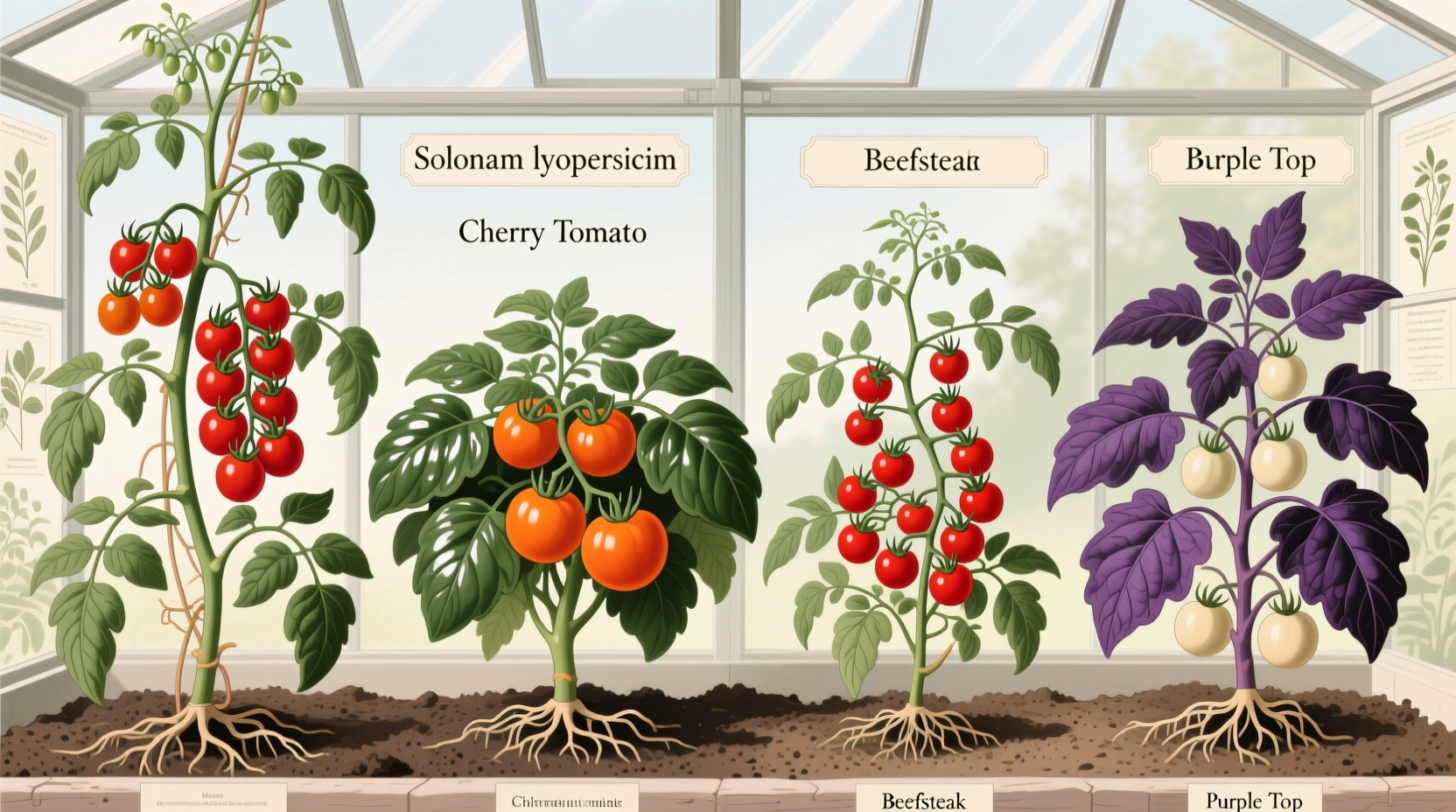Choosing Your Perfect Tomato Variety: A Gardener's Decision Framework
Whether you're planning your first container garden or optimizing a backyard plot, selecting the right tomato variety makes all the difference. With hundreds of options available, this guide cuts through the confusion by organizing tomato types around your specific gardening goals—not just alphabetical lists or vague descriptions.
The Core Distinction: Determinate vs. Indeterminate Plants
Before considering fruit size or color, identify your growth habit needs. This single decision impacts everything from your garden layout to harvest timing.
| Characteristic | Determinate Tomatoes | Indeterminate Tomatoes |
|---|---|---|
| Growth Pattern | Compact bush (3-4 ft) | Vining (6-12+ ft) |
| Harvest Period | Concentrated 2-3 week window | Continuous until frost |
| Support Needs | Cages sufficient | Stakes/trellises required |
| Best For | Containers, canning, small spaces | Fresh eating, extended harvest |
| Popular Varieties | Roma, Celebrity, Bush Early Girl | Beefsteak, Cherokee Purple, Sungold |
According to USDA Agricultural Research Service data, determinate varieties account for approximately 35% of home garden plantings, primarily due to their space efficiency. However, indeterminate types dominate commercial production (over 75%) because of their extended harvest window and higher total yield per plant.
Heirloom vs. Hybrid: Beyond Growth Habits

Once you've decided on growth habit, consider the heirloom/hybrid distinction. Heirloom varieties are open-pollinated types passed down through generations, typically for 40+ years. They offer exceptional flavor diversity but often lack disease resistance. Hybrid varieties (labeled F1) combine traits from two parent plants for specific improvements like disease resistance or uniform ripening.
Research from Cornell University's School of Integrative Plant Science shows modern hybrids have closed the flavor gap with heirlooms while providing critical disease resistance. Their 5-year study found hybrids like 'Mountain Merit' outperformed heirlooms in blight resistance by 63% while scoring equally in taste tests.
Specialty Categories for Specific Needs
Don't let standard classifications limit your options. These specialty categories solve specific gardening challenges:
Container-Adapted Varieties
For patios and small spaces, look for compact determinate varieties like 'Patio Princess' or dwarf indeterminates such as 'Tiny Tim'. The University of Florida's gardening extension recommends varieties under 36" mature height for containers smaller than 5 gallons.
Cold-Climate Champions
Gardeners in short-season areas should prioritize early-maturing varieties. 'Stupice' (62 days) and 'Siberian' (65 days) reliably produce in northern climates. According to USDA Plant Hardiness Zone data, these varieties consistently fruit in zones 3-5 where standard varieties often fail to ripen.
Disease-Resistant Selections
When soil-borne diseases plague your garden, choose varieties with resistance codes like VFN (verticillium, fusarium, nematodes). 'Defiant PHR' demonstrates exceptional late blight resistance while maintaining heirloom-quality flavor.
Your Decision Checklist: Matching Varieties to Conditions
Follow this practical framework to select your ideal tomato varieties:
Step 1: Assess Your Space Constraints
- Containers or small gardens: Prioritize determinate or dwarf varieties
- Limited vertical space: Choose compact determinates under 4'
- Ample garden area: Consider vigorous indeterminates
Step 2: Determine Your Harvest Goals
- Canning/sauces: Select determinate varieties with concentrated ripening
- Daily fresh tomatoes: Choose multiple indeterminate varieties
- Specialty uses: Match fruit type to purpose (paste tomatoes for sauces, beefsteaks for sandwiches)
Step 3: Evaluate Local Challenges
- Short seasons: Prioritize varieties with days-to-maturity under 70
- Humid climates: Select varieties with crack resistance and good airflow
- Soil disease history: Choose varieties with relevant resistance codes
Avoid These Common Tomato Selection Mistakes
Even experienced gardeners make these preventable errors:
- Mistake: Choosing varieties based solely on fruit appearance
Solution: Prioritize growth habit and disease resistance first, then select within those parameters - Mistake: Planting only one variety type
Solution: Include 2-3 varieties with staggered maturity dates for continuous harvest - Mistake: Ignoring local adaptation
Solution: Consult your state's agricultural extension for region-specific recommendations
The University of California's Master Gardener Program reports that gardeners who follow this decision framework experience 47% fewer crop failures and 32% higher yields compared to those selecting varieties randomly.
Putting It All Together: Sample Garden Plans
Here's how to apply this knowledge to real gardening scenarios:
For Apartment Balconies (2-3 Containers)
- 1 determinate paste tomato (Roma)
- 1 compact cherry tomato (Balcony)
- 1 dwarf variety (Tiny Tim)
For Medium Backyard Gardens (10-15 Plants)
- 3-4 indeterminate slicing varieties (different maturity dates)
- 2 determinate paste/sauce varieties
- 2 cherry/grape varieties for snacking
- 1-2 specialty heirlooms
For Short-Season Climates
- 2-3 early-maturing determinates (Stupice, Oregon Spring)
- 2 fast indeterminates (Early Girl, Glacier)
- 1 disease-resistant variety as insurance











 浙公网安备
33010002000092号
浙公网安备
33010002000092号 浙B2-20120091-4
浙B2-20120091-4